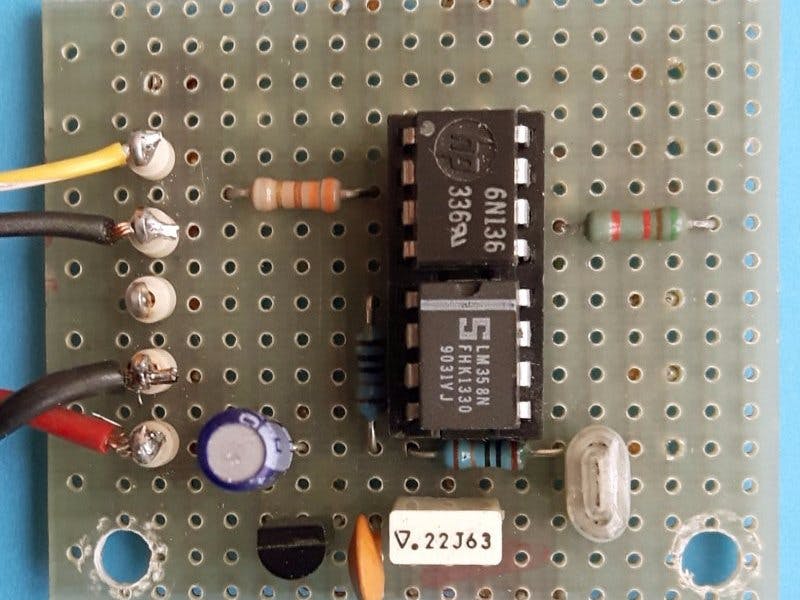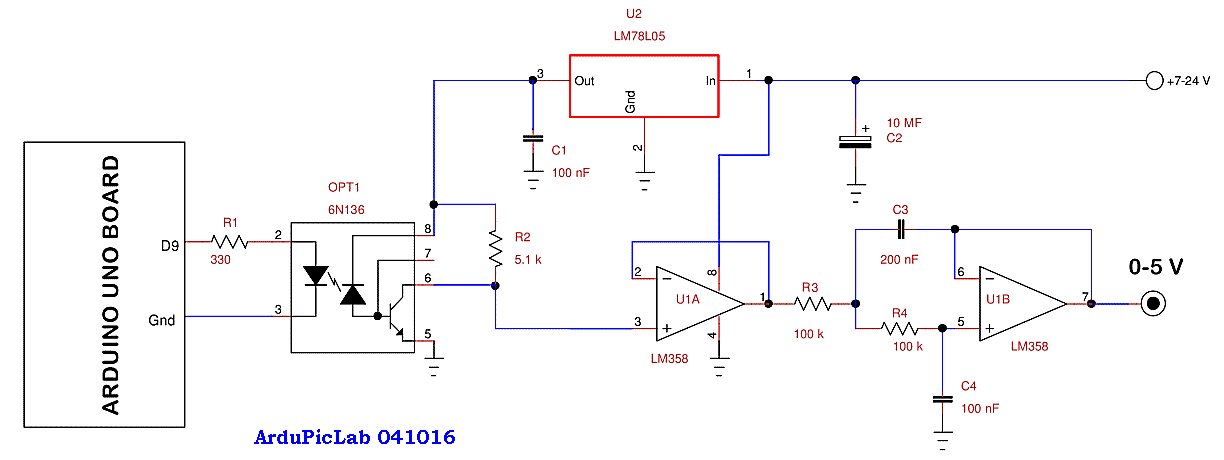This project completes the series of my articles about the Arduino analog I/O with the aim to use it as a controller of small automation systems.
In control systems of the industrial plants it is always advisable to isolate both the inputs and the outputs coming from the field. This prevents disturbances caused by power surges, lightning strikes or other EMI sources and also by ground potential differences.
Arduino Uno, or systems based on the ATmega328 chip has no a true analog output, but it may be realized using a PWM output averaged with a low-pass filter.
The use of an averaged PWM signal with 8-bit setting is not comparable with a real DAC, but in the insulation case presents undoubted advantages of simplicity since it is sufficient to use an optocoupler for isolating the PWM digital signal. Recently I designed another circuit to generate a 4-20 mA current with Arduino, that experience gave me the idea for this new project.
More details, the components list and test results can be found on my blog ArduPicLab.






Comments
Please log in or sign up to comment.